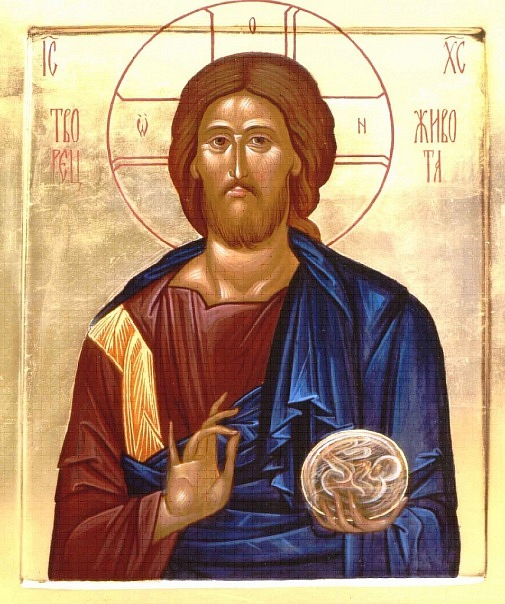“For you created my inmost being; you knit me together in my mother’s womb.” (Psalm 139:13)
“He made himself nothing by taking the very nature of a servant, being made in human likeness.” (Phil 2:7)
As one who has used some of the techniques of developmental biology, I have a rather different perspective on Advent to most people. Long before that famous journey to Bethlehem, before Mary was accused of adultery, and before Joseph married his pregnant betrothed, Jesus became an embryo.

I don’t see the point of trying to figure out what happened between the moment Gabriel spoke to Mary and a tiny embryo appearing in her womb, with a full complement of human DNA. All I know is that one cell divided in two, two cells became four, eight, sixteen, and so on, until the Son of God was a blastocyst: a ball of cells no bigger than the tip of the finest of fine-liner pens.
Viewing the incarnation through the lens of developmental biology brings home the beauty and fragility of that process. How then does this knowledge affect our understanding of the person of Jesus, and how does it affect our own faith journey during Advent?
Fearfully and Wonderfully Made
My own scientific research was into inherited eye disease using the techniques of genetics, molecular biology, and developmental biology. I studied small tropical zebrafish, and that experience equipped me to understand our own early development because we share many of the same basic developmental processes.
I am fascinated by Psalm 139, with its description of the shepherd-king David developing “in the secret place” (139:15, NIV). The earliest stages of fetal development would have been a complete mystery to anyone when the Psalm was first written, but we now know that the first few weeks are a highly complex dance. The cells of the tiny ball that implants in the side of the womb continue to divide, taking on increasingly specialized roles, and moving in precise patterns as the embryo forms and folds, eventually becoming something recognizably human.
Each cell in the embryo develops its own identity in response to the biochemical signals that sweep across it. That cell must cling to its neighbors, transmitting as well as receiving biochemical messages. Sometimes it moves along with the crowd, pulled into line like a kid at a barn dance. At other moments it lets go and heads off in a different direction, following its instructions to the letter. Some cells are taken out of the dance, no longer needed as organs such as the brain or hands take shape like a sculpture chiseled out of marble.
David knew none of this as he wrote his famous song of praise. What he did know was that he could curl up with his heavenly Father, secure in the knowledge that he was known and loved to the very core of his being.
About a thousand years after Psalm 139 was written, God entered his own creation. The Son of God took on a physical body, “being made in human likeness . . . [a]nd being found in appearance as a man” (Phil 2:7-8). He took on human DNA.
To some commentators, this dignifies organic life. God shared with us the beautiful, fragile, intricate process of becoming a child. To me, the Incarnation also demonstrates the deep love and humility of God. The Son had all the glory associated with “being in very nature God,” yet submitted to being made of same stuff as every other living thing on earth. He “did not consider equality with God something to be used to his own advantage; rather he made himself nothing”—a ball of cells.
Looking With Humility
This Christmas, think about how our wise, loving, patient God entered the ancient Middle East—“Taking the very nature of a servant”—and trusted himself to the developmental processes that had been created through him. He became a clump of fragile cells, each one with the consistency of a blob of hair gel—though far more complex. He developed into a vulnerable embryo that needed a womb to keep it safe. God chose a young woman—one who possessed great physical, emotional, and spiritual strength—to nurture him in those early stages, and in fact throughout his life in different ways.
The nativity story turns everything on its head. The Creator became part of his own creation, trusting himself to the care of to a poor young couple, at the start of a very unexpected kind of revolution. The greatest change in history began with a physical process that scientists are only just beginning to understand, and with a demonstration of humility that none of us can hope to fully comprehend or imitate on our own.
As a biologist, this story gives me a sense of my own dependence on God, which helps me to worship God more fully. We are made of dust. God, who sustained the whole process of my coming into existence and then submitted to becoming physically embedded within it, is now “exalted … to the highest place.” This story also makes me interested in finding out more, so I can enjoy yet more wonders of God’s creation.
Finally, the events of the Incarnation encourage me that with God’s help, I can reflect a little of Jesus’ love and humility, becoming part of the revolution that he initiated so spectacularly through his death and resurrection.
Happy Advent!
Dr Ruth Bancewicz, Church Engagement Director at The Faraday Institute for Science and Religion
Source – https://scienceforthechurch.org/
